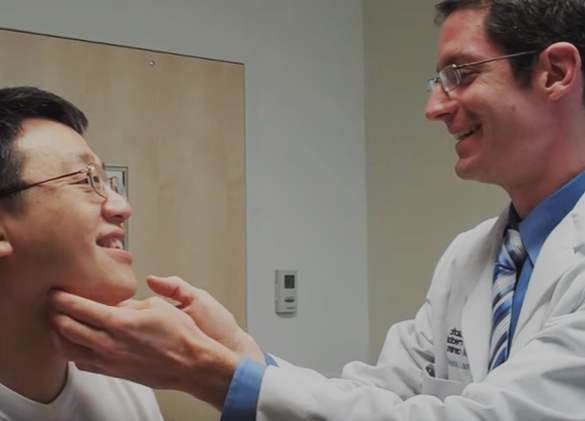Lengthening A Short Nose With Revision Rhinoplasty
In a prior post I discussed performing a rhinoplasty to correct a congenitally short, or upturned nose. Today I'd like to go over what is involved in correcting an over-rotated (upturned) nose that is a result of a prior rhinoplasty.
Upturned, Over-Projected Tip and Pollybeak Deformity
This patient of mine had a prior rhinoplasty several years before seeing me. At that time a hump was removed from her bridge.

As you can see in the before photo on the left, however, she still has a significant amount of fullness to her supra-tip area. This patient's fullness, also called a pollybeak deformity, was caused by residual excess height of the septum. This occurred because during the original nose surgery the surgeon smoothed out the bump on the upper part of the nose but neglected to take down the septal cartilage causing it toward the tip.
Additionally, the tip is overprojected and more upturned than ideal. This patient is of above average height so even the slightest amount of tip over-rotation can be distracting as other people are more likely to be able to look up at her nostrils.
The after photo on the right shows the patient 3 years after surgery. I deprojected her tip, trimmed the excess cartilage causing the pollybeak and lengthened her nose to create a more balanced profile.
Improving surgical results by refining tip bulbosity

This before and after photo shows another view of the changes I was able to create with revision rhinoplasty. Her left nasal tip was also asymmetrically bulbous so this cartilage was made less convex during surgery using a cartilage graft. Although a subtle improvement, this type of nuanced manuever is what can create a more remarkable result.
Revision Rhinoplasty to create more symmetric nostrils
The patient's before and after base view shows how her septum was deviated to her right creating different sized nostrils.
During her revision nose surgery I used further cartilage grafting techniques to place the columella in the midline while at the same time stabilizing the tip to prevent long term issues with tip drooping and loss of support.
You can read more about this patient's case in my revision rhinoplasty photo gallery here. If you'd like to learn more about rhinoplasty surgery check out my revision rhinoplasty information section here or my rhinoplasty FAQ here.


